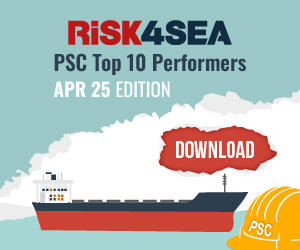EEDI will gradually reduce the emissions from the world fleet
 The results from the study show that, as new ships are built, the EEDI will gradually reduce the emissions from the world fleet by 3% in 2020, 13% in 2030 and 30% in 2050. The SEEMP will not directly mandate an emission reduction but, due to increased awareness of costs and reduction potentials, the study estimated the reduction to be 5-10% from 2015 onwards.
The results from the study show that, as new ships are built, the EEDI will gradually reduce the emissions from the world fleet by 3% in 2020, 13% in 2030 and 30% in 2050. The SEEMP will not directly mandate an emission reduction but, due to increased awareness of costs and reduction potentials, the study estimated the reduction to be 5-10% from 2015 onwards.
EFFECT OF A SHIP ENERGY EFFICIENCY MANAGEMENT PLAN (SEEMP)
The EEDI will mandate improvements in hull design and machinery, while the SEEMP will require ship owners to develop a plan for their ships. Operational measures have significant reduction potentials that, based on current fuel prices, are cost-effective. However, there seems to be limited uptake of these measures caused by non-financial barriers, such as lack of competence, lack of cooperation between players and split incentives. Higher fuel prices will only lead to a limited extra implementation of measures, but over time they will drive technology development and innovation.
Other incentives will have to be in place to implement the existing set of measures. The SEEMP will initiate monitoring and target setting as well as the examination of concrete measures to be implemented for each vessel. Awareness of the potential savings is expected to increase the uptake of measures.
WAIVER CLAUSE
In the final negotiations, a clause was inserted in the regulations allowing flag states to waive the EEDI requirements for their fleets for up to four years after entry into force. It is still uncertain how many flag states will apply this waiver clause. Complying with the requirements in Phases 0 and 1 is expected to come at low cost. There is no commercial reason to order a ship without a calculated EEDI, as the second-hand value may be lower and the ability to get a charter may be reduced as charterers will prefer ships with a low (and thus calculated) EEDI. If only the three flag states opposing the amendments waive the requirements, 5% of the fleet will be exempted.
VLCC CASE
The new regulations were applied to a VLCC to see the developments in its fuel consumption and cost. The baseline case was a tanker using 23 000 tonnes of fuel per year, which at present fuel prices would cost around USD 10 million. The first figure shows how a new vessel would perform year by year up to 2050. A ship built according to the requirements in 2030 would use about 14,000 tonnes per year in 2030. The figures below show the fuel consumption of a newbuild VLCC. The fuel cost calculations in the second chart are based on a scenario where the sulphur regulations being introduced in 2020 will significantly increase fuel prices, but the increase in energy efficiency will reduce the expected cost from USD 50 million to USD 30 million per year.
Source: DNV



























































